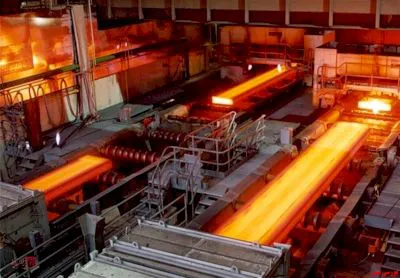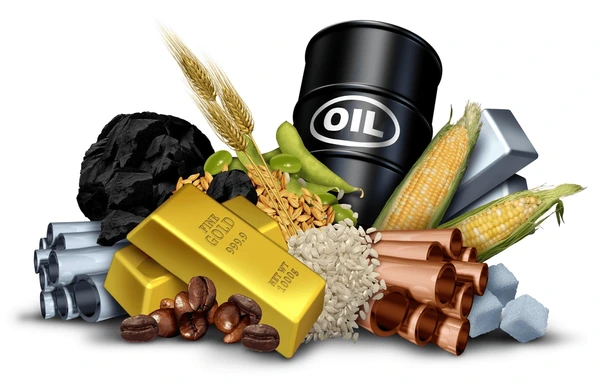Steel trade in Oman - Exporting Steel to Oman
- Anbar Asia
- Trade with Oman
- Oman's Metals market
- Steel trade in Oman
- Oman
 كركديTea And Coffee, Spices, Industrial Crops
كركديTea And Coffee, Spices, Industrial Crops - Oman
 احجار نيزكMeteorite
احجار نيزكMeteorite - Oman
 Chemical fertilizer
Chemical fertilizer - Oman
 الاجبانDairy
الاجبانDairy - Oman
 زغالGroceries, Snacks, Carpet
زغالGroceries, Snacks, Carpet - Oman
 حجر الياقوتRuby
حجر الياقوتRuby - Oman
 مساعدة على إنتاج الأعلاف الثروة الحيوانية بطرق وأساليب الرطوبة والبخارHerbal Distillate, Livestock, Animal Feed, Industrial Crops
مساعدة على إنتاج الأعلاف الثروة الحيوانية بطرق وأساليب الرطوبة والبخارHerbal Distillate, Livestock, Animal Feed, Industrial Crops - Oman
 منظفات سائلةDetergent
منظفات سائلةDetergent - Oman
 نيازك واحجار كريمهMeteorite
نيازك واحجار كريمهMeteorite - Oman
 احجار كريمةTurquoise, Ruby, Agate, Diamond, Amber, Topaz, Emerald, Jade, Pearl, Meteorite, Tanzanite
احجار كريمةTurquoise, Ruby, Agate, Diamond, Amber, Topaz, Emerald, Jade, Pearl, Meteorite, Tanzanite - Oman
 احجار عقيقAgate
احجار عقيقAgate - Oman
 حجرMeteorite
حجرMeteorite  أنس3 months agoOman
أنس3 months agoOman نيزكMeteorite
نيزكMeteorite- Oman
 خیلانGroceries, Canned Foods, Pickles
خیلانGroceries, Canned Foods, Pickles - Oman
 صخور ومعادن للبيعCoal
صخور ومعادن للبيعCoal  علي3 months agoOman
علي3 months agoOman صناعة مستحضرات التجميلParaffin
صناعة مستحضرات التجميلParaffin- Oman
 Organic and Non Organic Spices Dry Fruits etcSpices
Organic and Non Organic Spices Dry Fruits etcSpices - Oman
 حجر نيزكMeteorite
حجر نيزكMeteorite - Oman
 لولو طبيعيPearl
لولو طبيعيPearl - Oman
 فضةGalena, Coal
فضةGalena, Coal - Oman
 اعلاف حيوانيةChickens And Poultry, Animal Feed
اعلاف حيوانيةChickens And Poultry, Animal Feed - Oman

 حجر زمرد روسي طبيعي مع شهادة المختبر natural russian emerald with lab certiTurquoise, Ruby, Agate, Topaz, Emerald, Jade, Spinel, Meteorite
حجر زمرد روسي طبيعي مع شهادة المختبر natural russian emerald with lab certiTurquoise, Ruby, Agate, Topaz, Emerald, Jade, Spinel, Meteorite - Oman
 جميع أنواع البيتومين، أفضل نوعية تسليم سريع، تعاون دائمBitumen, Engine Oil
جميع أنواع البيتومين، أفضل نوعية تسليم سريع، تعاون دائمBitumen, Engine Oil - Oman
 الحجاز كريمهAgate
الحجاز كريمهAgate - Oman
 احجار كريمه ومعادن وصخورCassitrite, Coal, Ruby, Agate, Lapis Lazuli, Jade, Tanzanite
احجار كريمه ومعادن وصخورCassitrite, Coal, Ruby, Agate, Lapis Lazuli, Jade, Tanzanite



 كركدية2 weeks ago
كركدية2 weeks ago كركديTea And Coffee, Spices, Industrial Crops
كركديTea And Coffee, Spices, Industrial Crops سالم4 weeks ago
سالم4 weeks ago احجار نيزكMeteorite
احجار نيزكMeteorite فرهاد و صدیقه للتجارة ش م م1 months ago
فرهاد و صدیقه للتجارة ش م م1 months ago Chemical fertilizer
Chemical fertilizer الأساس الراقي1 months ago
الأساس الراقي1 months ago الاجبانDairy
الاجبانDairy احمد بزله1 months ago
احمد بزله1 months ago زغالGroceries, Snacks, Carpet
زغالGroceries, Snacks, Carpet منذر1 months ago
منذر1 months ago حجر الياقوتRuby
حجر الياقوتRuby الوطنية للتنمية والتطوير للزراعة اعلاف مستدامة2 months ago
الوطنية للتنمية والتطوير للزراعة اعلاف مستدامة2 months ago مساعدة على إنتاج الأعلاف الثروة الحيوانية بطرق وأساليب الرطوبة والبخارHerbal Distillate, Livestock, Animal Feed, Industrial Crops
مساعدة على إنتاج الأعلاف الثروة الحيوانية بطرق وأساليب الرطوبة والبخارHerbal Distillate, Livestock, Animal Feed, Industrial Crops Fady2 months ago
Fady2 months ago منظفات سائلةDetergent
منظفات سائلةDetergent مؤمن ابراهيم2 months ago
مؤمن ابراهيم2 months ago نيازك واحجار كريمهMeteorite
نيازك واحجار كريمهMeteorite احجار كريمة مسقطية2 months ago
احجار كريمة مسقطية2 months ago احجار كريمةTurquoise, Ruby, Agate, Diamond, Amber, Topaz, Emerald, Jade, Pearl, Meteorite, Tanzanite
احجار كريمةTurquoise, Ruby, Agate, Diamond, Amber, Topaz, Emerald, Jade, Pearl, Meteorite, Tanzanite عبدالعزيز العلوي2 months ago
عبدالعزيز العلوي2 months ago احجار عقيقAgate
احجار عقيقAgate عبدالعزيز البرامي3 months ago
عبدالعزيز البرامي3 months ago حجرMeteorite
حجرMeteorite أنس3 months ago
أنس3 months ago نيزكMeteorite
نيزكMeteorite east star eight3 months ago
east star eight3 months ago خیلانGroceries, Canned Foods, Pickles
خیلانGroceries, Canned Foods, Pickles أبو حاتم الرواحي3 months ago
أبو حاتم الرواحي3 months ago صخور ومعادن للبيعCoal
صخور ومعادن للبيعCoal علي3 months ago
علي3 months ago صناعة مستحضرات التجميلParaffin
صناعة مستحضرات التجميلParaffin Nadeem5 months ago
Nadeem5 months ago Organic and Non Organic Spices Dry Fruits etcSpices
Organic and Non Organic Spices Dry Fruits etcSpices FAWAZ AHMED5 months ago
FAWAZ AHMED5 months ago حجر نيزكMeteorite
حجر نيزكMeteorite ناصر المعمري5 months ago
ناصر المعمري5 months ago لولو طبيعيPearl
لولو طبيعيPearl Obaid Khalid Obaid Al Kaabi5 months ago
Obaid Khalid Obaid Al Kaabi5 months ago فضةGalena, Coal
فضةGalena, Coal الاحمد6 months ago
الاحمد6 months ago اعلاف حيوانيةChickens And Poultry, Animal Feed
اعلاف حيوانيةChickens And Poultry, Animal Feed أبو ليان للأحجار الكريمة الطبيعية6 months ago
أبو ليان للأحجار الكريمة الطبيعية6 months ago
 حجر زمرد روسي طبيعي مع شهادة المختبر natural russian emerald with lab certiTurquoise, Ruby, Agate, Topaz, Emerald, Jade, Spinel, Meteorite
حجر زمرد روسي طبيعي مع شهادة المختبر natural russian emerald with lab certiTurquoise, Ruby, Agate, Topaz, Emerald, Jade, Spinel, Meteorite The world of Glory6 months ago
The world of Glory6 months ago جميع أنواع البيتومين، أفضل نوعية تسليم سريع، تعاون دائمBitumen, Engine Oil
جميع أنواع البيتومين، أفضل نوعية تسليم سريع، تعاون دائمBitumen, Engine Oil الأحجار الكريمه6 months ago
الأحجار الكريمه6 months ago الحجاز كريمهAgate
الحجاز كريمهAgate Abo nwaf7 months ago
Abo nwaf7 months ago احجار كريمه ومعادن وصخورCassitrite, Coal, Ruby, Agate, Lapis Lazuli, Jade, Tanzanite
احجار كريمه ومعادن وصخورCassitrite, Coal, Ruby, Agate, Lapis Lazuli, Jade, Tanzanite

















